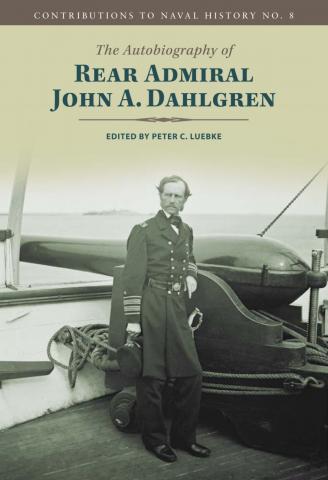
Peter Luebke, a recent UVA PhD History graduate currently serving as an historian at the U.S. Naval History and Heritage Command, just published an new edition of The Autobiography of Rear Admiral John A. Dahlgren. Part of the "Contributions to Naval History" series, Luebke's edition will be of interest to both naval and Civil War scholars.
From the book's summary:
"Among the naval heroes of the Civil War, Rear Admiral John Adolphus Bernard Dahlgren remains largely unknown. Part of this rests upon his sometimes difficult personality and self-promotion that aggravated his fellow officers; the other part of this lies upon his failure to take the Confederate city of Charleston by naval force. Dahlgren’s solid service during the siege of Charleston and in command of the South Atlantic Blockading Squadron did much to assure Union victory during the war, but it contained no stirring episodes that became legendary, such as those of David Glasgow Farragut at the Battle of Mobile Bay. Yet Dahlgren, and his autobiography, remain important today.
This book presents the first complete, authoritatively annotated transcription of an autobiography that Dahlgren wrote shortly after the Civil War. In it, he gives an account of his entire career. He describes the multiple innovations he introduced into the U.S. Navy. His career coincided with the important transition from sail to steam propulsion and the change from solid shot to cannon that fired explosive shells. Dahlgren demonstrates that the Navy has always confronted technological challenges head on, often against significant bureaucratic barriers from both within and without. At the outbreak of the Civil War, he ensured the protection of the Washington Navy Yard and began a friendship with Abraham Lincoln. During the Civil War, Dahlgren also faced the shift in naval warfare from wooden-hulled ships to ironclad vessels. He assumed command at Charleston in 1863 after the ironclad squadron under Rear Admiral Samuel Francis Du Pont failed to live up to the impossible expectation that ironclads alone could capture the city. Indeed, Dahlgren grappled with how best to use the new technology in operations with the Army against an unparalleled concentration of Confederate fortifications. Beyond learning how to employ the new vessels, he confronted new kinds of asymmetric warfare used by the Confederate defenders. Dahlgren and the Navy dealt with underwater mines, known at the time as torpedoes, the first successful military submarine, and semi-submerged torpedo boats. In addition to his own experiences, Dahlgren wrote of the heroism, courage, and dedication of those under his command or those he knew—from the officers on his staff to the extraordinary actions of his sailors."
A free PDF version of the book can be downloaded from the link below. Hard copies are available from the Government Publishing Office bookstore.
